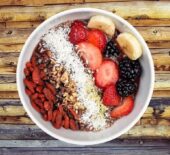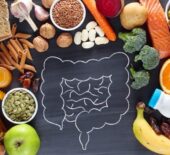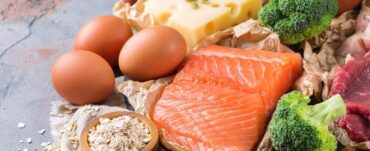There is a lot of hype in the media around fibre and why you need it but do you really understand what fibre is? Firstly there are three types of fibre soluble, insoluble and resistance starch. All three of these types play a different role in keeping your body healthy. If you are not sure what these roles are read on:
Soluble Fibre
This is the type of fibre which acts like a bulking agent to make your poo comfortable to pass (the other two options are diarrhoea or constipation). How this fibre type works is it slows how quickly the carbohydrate you eat is broken down, this not only keeps you fuller for longer but prevents the unwanted spike of your blood sugar. This ultimately leads to a quick crash of energy and reaching for the muffin at work you have tried so hard to avoid. This type of fibre can also lower your ‘bad’ LDL- cholesterol through a compound known as beta glucan which is found in oats. Beta glucan attaches to your LDL-cholesterol and ultimately is removed when you visit the bathroom.
Soluble fibre can also act as a prebiotic or a fuel source for the health promoting microbes in your body. When the health promoting microbes eat prebiotic fibre they produce compounds such as short chain fatty acids which have different health benefits for your body.
Types of foods soluble fibre can be found:
- Oats
- Legumes (kidney beans, chick peas, soy beans etc.)
- Fruit and vegetables (especially in the flesh which is why you should try to eat the skins of fruits and vegetables whenever possible).
Insoluble Fibre
This type of fibre is your friend especially if you are prone to constipation as it helps you stay regular in your number twos.
Where can you find this fibre type?
- Wheat bran
- Brown rice
- Wholegrain cereals
- Wholegrain pastas
Resistant Starch
This is the type of fibre which has been front and centre in the media. Like soluble fibre, resistant starch can promote the development of the health promoting bacteria in your gut. This type of bacteria is supported in research to helps to promote an optimal functioning immune system. Also, helps your metabolism to function at its best, which ultimately leads to you having a healthy weight. 70% of the serotonin or the 'feel-good' hormone is made in your guts. You have something called the brain-gut axis which is a strong connection between your bran and guts. Ultimately if your guts are happy so are you!
What happens when your good bacteria are taken over by more bad varieties? This leads to you getting sick easily, a slower metabolism, increased allergies and autoimmune diseases like arthritis.
Where can you find this fuel for health?
- Unripened bananas
- Onions
- Green and black tea
- Cooked and cooled wholegrain pasta, potatoes, and rice and wholegrain varieties.
Take home message: All three types of fibre are important for your health. Try eating wholegrains and vegetables or fruit with each meal and snack and this should easily meet your needs for all three types of fibre and dietary fibre recommendations each day.








